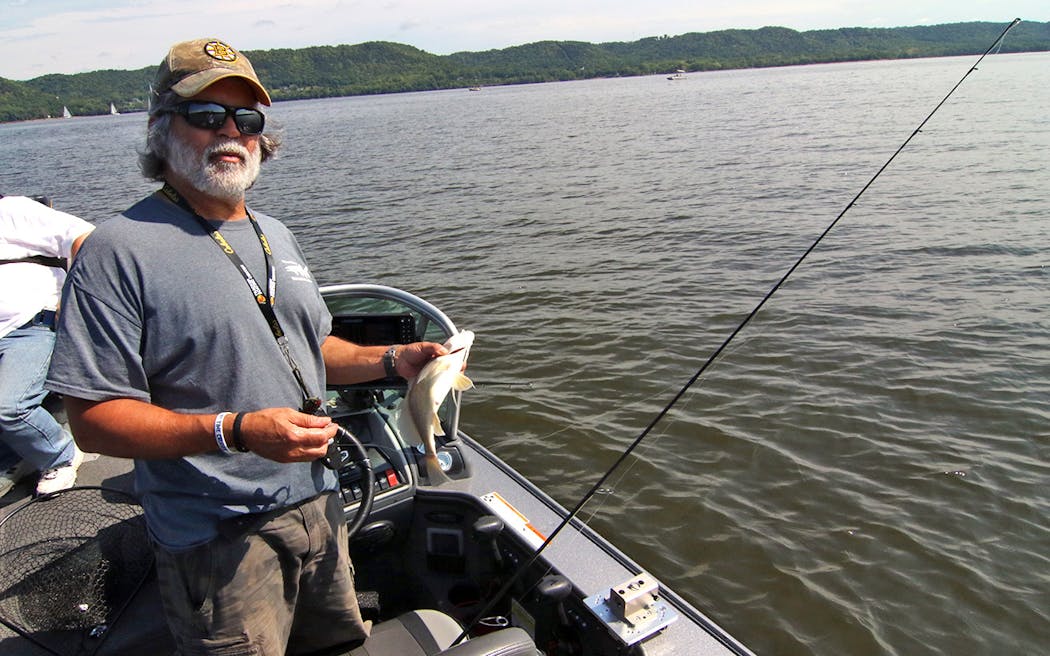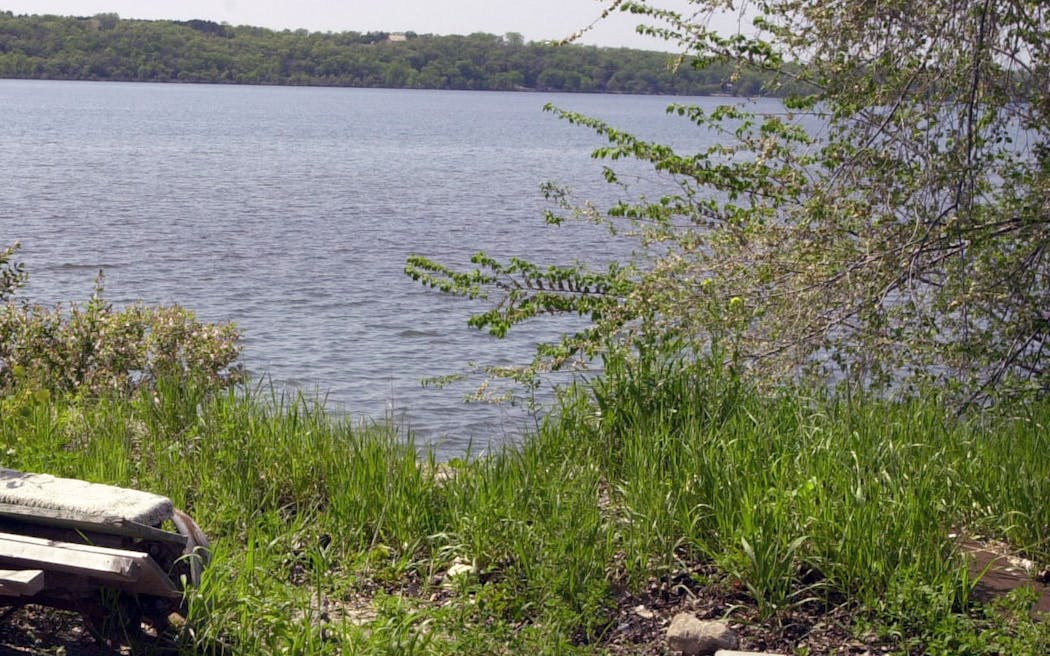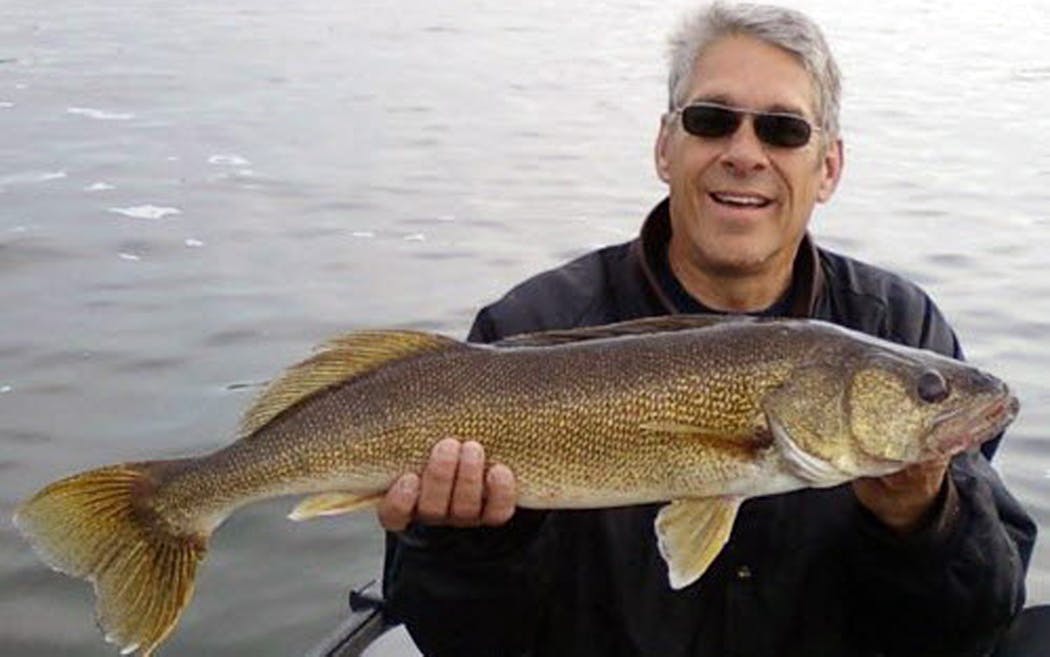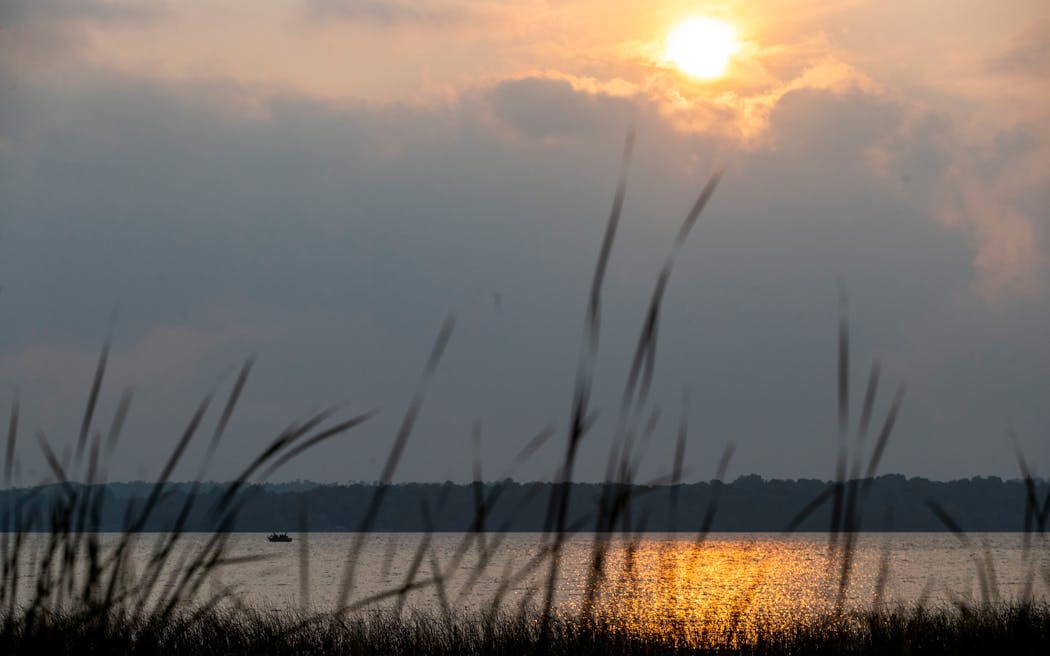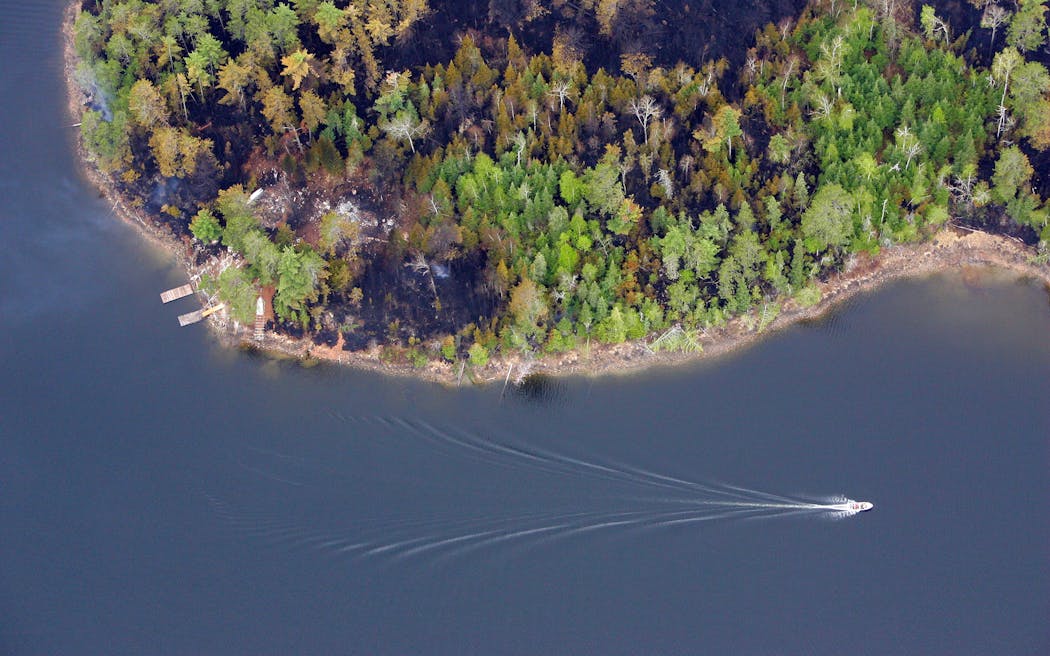Some anglers fish the same lakes and rivers day in and day out, which is good and not so good.
Good because familiar waters are like longtime friends, welcoming and forgiving.
Not so good because in fishing, as in any adventure, courting the unknown is the best way to ensure that surprise is the catch of the day, every day.
So, this summer — beginning as soon as Saturday, May 13, when the state's inland walleye season begins — pack a tackle box and explore new Minnesota lakes and rivers.
To spark your imagination and nurture the wanderlust many anglers harbor, follow along on our seven-day Walleye Road Trip.
As Jack Kerouac, author of "On The Road," said, the biggest surprise might be how easy the act of leaving is, and how good it feels.
Day 1: Lake City
Hotspot: Lake Pepin.
Size: 25,000 acres, encompassing a 22-mile-long wide spot in the Mississippi.
Max depth: 60 feet.
Boat launch: Multiple
Nearby state park: Frontenac
Fish species: In addition to walleye, Lake Pepin holds every finned critter you can think of (and some you'll never think of), including dogfish, chestnut lamprey, shovelnose sturgeon, highfin carpsucker, hornyhead chub and quillback.
DNR says: Pepin's walleyes are abundant and healthy, according to 2021 trawling and electrofishing surveys.
Lowdown: Year-round fishing is allowed on Pepin, but open-water walleye angling doesn't usually pick up until mid-April, give or take. Certainly, as early as late March walleyes can be found either en route upstream in the Mississippi to the Red Wing area, or returning downstream from Red Wing to their summer haunts in Pepin. This lake has a lot of structure, and walleyes in summer can be found along the lake's many points (try Presbyterian Point and Green Point).
Bait: U.S. Gas has a dandy selection in Lake City. 4 Seasons Sports in Red Wing is also a good stop en route from the Twin Cities.
Coffee and breakfast: Heidi's Huggamug Cafe in Lake City (near the marina), opens at 5:30 a.m. except Wednesdays.
Other fun stuff: Visit the National Eagle Center in nearby Wabasha.
More fishing info: DNR Mississippi River Fishing Guide.
Day 2: Ortonville
Hotspot: Big Stone Lake
Size: 12,000 acres and 27 miles long, but narrow.
Max depth: 16 feet.
Boat launch: Multiple — some DNR, others owned by townships or cities.
Nearby state park: Big Stone Lake.
Fish species: Loaded with a who's-who of fish, large and small. In addition to walleyes, Big Stone holds shorthead redhorse, bigmouth buffalo, orangespotted sunfish, blacknose dace (western) and rosyface shiners, among many other species.
DNR says: Big Stone was last surveyed in 2015, with walleyes showing up in good numbers — and recent angler catches indicate catchable numbers of walleyes remain in 2023. Most abundant in the surveys were 12-17 inchers, a popular size targeted by walleye anglers.
Lowdown: Like Lake Pepin, Big Stone is a border water (with South Dakota), and walleye fishing on the fertile lake is open continuously. The combined walleye and sauger limit is four, with only one allowed over 20 inches. Jig and a minnow is a springtime presentation favorite on Big Stone, with these rigs tossed as tight to the shoreline as possible. The north half of the lake is generally better early, with walleyes moving south as summer progresses.
Bait: Artie's Bait & Tackle, Ortonville.
Breakfast/dinner: Ally Cat Bowling, Ortonville.
Other fun stuff: Visit Big Stone National Wildlife Refuge.
More fishing info: DNR Ortonville Area Fisheries 2023 Outlook.
Day 3: Alexandria
Hotspot: Lake Miltona
Size: 5,724 acres.
Max depth: 105 feet.
Boat launch: Three public sites — two managed by the DNR, one by the township.
Nearby state park: Lake Carlos.
Fish species: Walleyes, as well as muskies, northern pike, largemouth and smallmouth bass inhabit Miltona, as does the usual assortment of oddball species — tadpole madtoms, northern redbelly dace and logperch, among others.
DNR says: Traditionally a standout walleye lake among a score or two of good walleye lakes in the Alexandria area, Miltona walleye numbers have declined in recent years, as a 2019 DNR survey attests. Whether the decline is real or whether, due to increased water clarity, the lake's walleyes have sought deeper waters and therefore avoided DNR nets is uncertain. Miltona walleyes still attract anglers, however, as do its healthy largemouth bass, crappie and muskie populations. The good news: in 2022 the DNR stocked almost 61,000 walleye yearlings and almost 2 million walleye fry in Miltona.
Lowdown: Alexandria's draw as a walleye destination is the many lakes the area has to choose from. Lake Reno, located between Alexandria and Glenwood, has good walleye numbers and healthy largemouth bass and panfish populations. Lake Mary is also a good walleye choice.
Bait: Christopherson Bait and Tackle in Alexandria.
Coffee and breakfast: The Coffee Pot in Alexandria.
Other fun stuff: Visit the Runestone Museum.
More fishing info: Glenwood area DNR fisheries office.
Day 4: Detroit Lakes
Hotspot: Detroit Lake.
Size: 3,067 acres.
Max depth: 89 feet.
Boat launch: Multiple — some operated by the city of Detroit Lakes, one by the DNR.
Nearby state park: Maplewood.
Fish species: Pugnose shiner, central mudminnow, brook stickleback and tadpole madtom, in addition to anglers' primary species, including walleyes, muskies and panfish.
DNR says: Detroit Lake receives a lot of angling pressure, but still offers good walleye fishing, as do a number of other lakes in the area. Walleyes naturally reproduce here, but the fishery has been supplemented with fingerling stocking annually since 2005. The catch rate during the DNR's most recent survey in 2019 was about the same as the historical average, with the length of most walleyes caught measuring about 17 inches.
Lowdown: Becker County, home to Detroit Lake, is best visited with a trailered boat, allowing an angler to hop from lake to lake. Though Detroit Lake lies within the city limits of the town of Detroit Lakes and is heavily developed, its walleye fishing can be pretty good. For variety while in the area, drop a line also in Big Cormorant Lake, which at 3,657 acres is the second-largest lake in Becker County. During a 2021 survey, DNR fisheries officials netted 206 walleyes, 126 of which measured in the 15-19 inch range.
Bait: Witt's Quality Bait & Tackle.
Coffee and breakfast: Ice House Restaurant at the Holiday Inn on the lake.
Other fun stuff: Mountain biking and more at Detroit Mountain Recreation Area.
More fishing info: DNR Detroit Lakes Area Fisheries.
Day 5: Ranier
Hotspot: Rainy Lake.
Size: 210,000 acres.
Max depth: 161 feet.
Boat launch: Multiple.
Nearby national park: Voyageurs.
Fish species: In addition to fish primarily sought by anglers — especially walleyes, but also northern pike, crappies and smallmouth bass — Rainy Lake is home to Iowa darters, Johnny darters, blackchin shiners and mimic shiners, among others.
DNR says: One of Minnesota's gems, Rainy is a beautiful, not-to-be-missed angling destination. Last year's DNR survey showed the lake's walleye fishery continues to be in excellent health, with multiple age classes in Rainy. Netted walleyes in the survey ranged from 5.1 to 24.9 inches long. Rainy also offers world-class smallmouth bass fishing, with many fish in the lake topping 19 inches, and abundant crappies, with an average length of 10 inches.
Lowdown: Whether visited in a small boat or a rented houseboat, Rainy is a fishing paradise. Because of its northern location, walleye action on this lake takes a while to heat up in spring. Typically by Memorial Day, walleyes are dispersing from spawning areas to more typical summertime points, reefs and drop-offs. Rainy's protected 18-26 inch slot with one walleye allowed over 26 inches and a four-fish limit is intended to keep the fishery healthy and maintain sufficient spawning stock.
Bait: Outdoorsman's Headquarters, International Falls.
Eatery: Thunderbird Lodge.
Other fun stuff: Check out Voyageurs National Park Visitor Center.
More fishing info: DNR International Falls Area Fisheries.
Day 6: Grand Marais
Hotspot(s): Saganaga (and many other lakes along the Gunflint Trail).
Size: 19,000 acres.
Max depth: 279 feet.
Boat launch: Three — two U.S. Forest Service; one county.
Nearby state parks: Cascade River and Judge C.R. Magney.
Fish: Saganaga is managed by the DNR for lake trout and walleyes. Smallmouth bass also are present in numbers, though the largest caught in DNR nets during a recent survey was 15.5 inches.
DNR says: Saganaga's reputation among anglers is that of a big-walleye producer. It still holds trophy walleyes, according to the DNR, noting that in a 2020 survey almost 30% of walleyes caught in test nets exceeded 20 inches. Many others bumped up against the 30-inch mark.
Lowdown: Forty years ago, "Sag" was a must-visit destination for walleye anglers, particularly those looking for trophy fish. The lake still produces fair numbers of walleyes, and some big ones, but overall walleye numbers reported in 2020 were similar to those since 2004, despite increased stocking and other efforts to boost the population. Anglers unfamiliar with this giant border lake might want to contract with a guide — Sag's sheer size can be intimidating otherwise. Meanwhile, other good walleye lakes along the Gunflint Trail include Two Island, Crescent, Sea Gull (partially in BWCA), Hungry Jack (carry-in trail) and Gunflint.
Bait: Buck's Hardware, Grand Marais.
Coffee and breakfast: Blue Water Café, Grand Marais.
Other fun stuff: Visit Chik-Wauk Museum and Nature Center on the Gunflint Trail.
More fishing info: Grand Marais Area DNR Fisheries.
Day 7: Twin Cities
Hotspots: St. Croix and Mississippi rivers.
Boat launches: Many.
Nearby state parks: William O'Brien, St. Croix, Wild River, Interstate, Afton.
Fish species: Name the fish and these rivers have it and often in abundance, including walleyes, smallmouth bass, various catfish, sturgeon and northern pike.
DNR says: DNR survey nets placed in Lake St. Croix in 2021 found a walleye catch rate down 48% from the highest catch rate ever, recorded in 2020, but it was still above average for the last four surveys and the second highest in the last 30 years. A 2022 survey of Mississippi River Pool 2, meanwhile, revealed an older population of fast-growing walleyes, due perhaps to the pool's catch-and-release regulation. But Pool 2 still holds some whoppers: 21% of sampled walleyes were at least 25 inches long.
Lowdown: Many metro walleye anglers favor the St. Croix and Mississippi rivers because they're generally uncrowded (weekends excepted) and can provide wilderness-like experiences close to home. The Mississippi will yield good numbers of walleyes in early spring near Prescott, Wis., before some of those fish move into the St. Croix. Through May and June, depending on water levels, the Stillwater-Hudson, Wis., area is good for walleyes, particularly near and downstream of bridge abutments and other structures. Similarly, as flood levels recede, Pool 2 of the Mississippi reveals itself as a place where walleye numbers and sizes can be extreme.
Bait: Blue Ribbon Bait, Oakdale.
Coffee and breakfast: In Stillwater, the Main Cafe and the Oasis Cafe.
Other fun stuff: Check out Discover Stillwater to rent an electric bike.
More fishing info: See DNR survey data for the Mississippi River Pool 2 and for the St. Croix.
